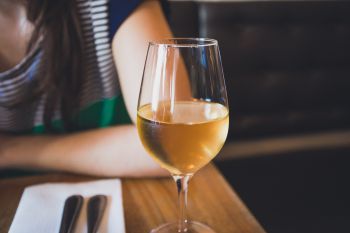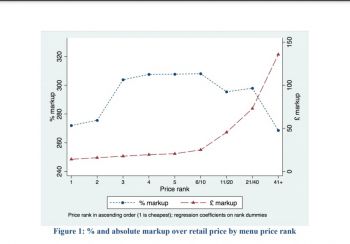

The urban myth that the second cheapest bottle on a restaurant wine list is a rip-off has been dispelled by economists at the London School of Economics (LSE) and The University of Sussex Business School.
The second-cheapest wine is widely thought to be significantly overpriced by restaurant owners to exploit naïve diners too embarrassed to choose the cheapest option.
But new research by Professor David de Meza and Dr Vikram Pathania finds that the mark-up on the second-cheapest wine is significantly below that on the four next most expensive wines on the list.
If anything, diners should avoid selecting from the middle of the list as the median wine tends to have the heftiest mark-up.
Prof de Meza, Eric Sosnow Professor of Management in the LSE Department of Management, said: "It has been a long-held assumption that the second-cheapest bottle on a restaurant wine list is priced with a greater mark-up to exploit naïve diners embarrassed to choose the cheapest option.
"But if one gives this notion some thought, it begins to quickly fall apart. If the embarrassment theory is such common knowledge, one might well conclude that the second-cheapest wine becomes an even less attractive choice to diners than the cheapest since it is not only believed to be a bad buy but signals a pitiable effort to appear affluent.
"And even if diners do behave as naïve behavioural types, it is not a given that all restaurateurs set out to exploit them.
"Our study challenges the notion and finds that the percentage mark-up on the second cheapest wine is significantly below that on the third, fourth, and fifth cheapest wine and well below the peak mark-up, which tends to occur around the median wine on the menu."
Prof Pathania, Reader in Economics at the University of Sussex Business School, said: "Having the highest percentage mark-ups on the middle wines can be logically explained. It would be reasonable to assume that at the low end of the wine, margins are kept down to encourage consumption. At the high end, low margins induce customers' upgrading to the more expensive wines on the list."
To challenge the long-held assumption that diners risked being ripped off by selecting any restaurant's second cheapest wine, the researchers took data from 470 wine menus used by 249 London-based restaurants which totalled 6335 wines for a working paper published by the American Association of Wine Economists.
The name, description, and vintage year of the wines were run through a price comparison website to find the cheapest available retail prices - with an exact match found for around two-thirds of the wines.
The study found that the mean percentage mark-up of restaurant wines compared to retail prices was more than threefold – an increase that was similar for both red and white wines.
Researchers chose the retail price and not the wholesale price because it is more readily available and because the mark-up from supermarket to restaurant price is a more natural comparison for diners to make.
The researchers also found that choosing to buy by the glass rather than by the bottle does not put drinkers significantly out of pocket.
On average, a large glass (250 ml) costs less than 7% more per unit volume compared to the bottle.






